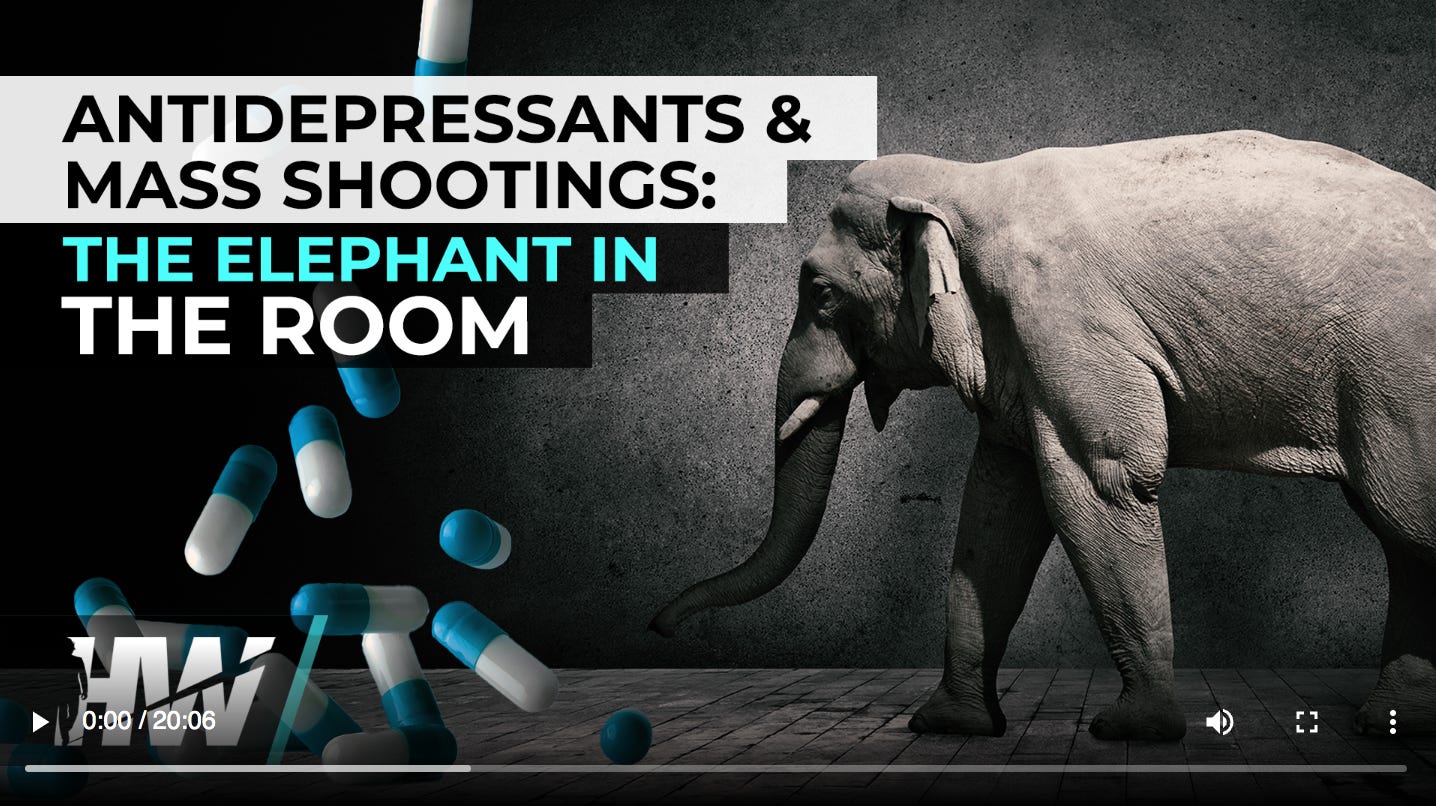REVISITING ANTIDEPRESSANT DRUG DANGERS IN A POST-COVID WORLD
Updated
A triad of alarming events is happening alongside each other, interlaced with desperation for society to pay closer attention to people in need and the dangers of antidepressants.
The failed pandemic response caused job loss and incomes to freefall for middle-class Americans. Those lower-income individuals were hit the hardest. The Great Barrington Declaration, whose authors and document were ruthlessly targeted by the Biden censorship regime and its health official minions, were on record with the unheeded warning on October 5, 2020, stating, “the working class and the poor to carry the heaviest burden” – and sadly they did.
A non-exhaustive overview of the side and ripple effects of the pandemic and related lockdown measures on mental health was compiled in the journal Frontiers of. Psychology in September 2020, one month before the Great Barrington Declaration. It included over 15 studies showing the negative effects of lockdown measures on mental health – also ignored.
To compound matters, in March of this year, the government cut food stamps in 32 states and the District of Columbia that were providing emergency allotments. The cut affected 42 million Americans and, if we can trust them, CNN reports that $3 billion a month is eliminated.
The bottom line, society is still reeling from the toll of the government’s failed pandemic response. A 2022 poll found 90% of US adults say the United States is experiencing a mental health crisis.
Looking at data from 1999 to 2016, suicide rates in the U.S. rose nearly 30 percent The fallout from the pandemic response provided no respite. The CDC data trend line shows a steady increase in both male and female suicide rates from 2001 to 2021.

As people face often insurmountable odds, the mental health of America has taken a hard hit. A separate type of invisible pandemic whose symptoms are often hidden and only seen through cold, jarring numbers given as yearly totals.
In 2022, the Biden administration allotted $300 million in mental health funding a large portion going to increase access to mental healthcare services. One of the major tools in psychiatry’s toolkit for mental health disorders is the prescribing of antidepressant drugs. A marketing opportunity was born!
During the pandemic response, finance websites buzzed with headlines about the coming growth in the antidepressant drug market in the next few years.
“the growth of the market is primarily driven by the rising prevalence of depression. The number of depression cases has increased significantly since 2021 due to the negative impact of the COVID-19 pandemic on mental health.”
A report by analysts at Technavio states:
“In terms of region, North America will emerge as the dominant region, occupying 37% of the global market share. The regional market is driven by government initiatives to combat depression.”
But where’s the science these days?
Published recently in the Journal Molecular Psychiatry, The serotonin theory of depression: a systematic umbrella review of the evidence looks at the principal relevant areas of research on the still influential serotonin hypothesis of depression known as the ‘chemical imbalance.’ Also known as the primary theory used to market, prescribe and push antidepressant medication onto populations.
The authors conclude in their analysis:
“Our comprehensive review of the major strands of research on serotonin shows there is no convincing evidence that depression is associated with, or caused by lower serotonin concentrations or activity.”
The researchers leave readers with this final paragraph in their analysis:
“This review suggests that the huge research effort based on the serotonin hypothesis has not produced convincing evidence of a biochemical basis for depression. This is consistent with research on many other biological markers. We suggest it is time to acknowledge that the serotonin theory of depression is not empirically substantiated.”
Meanwhile, a companion article written by two of the study’s authors and published in The Conversation states, “It is important that people know that the idea that depression results from a “chemical imbalance” is hypothetical. And we do not understand what temporarily elevating serotonin or other biochemical changes produced by antidepressants do to the brain. We conclude that it is impossible to say that taking SSRI antidepressants is worthwhile, or even completely safe.”
The statement sent shockwaves through the egos and pocketbooks of SSRI cheerleaders everywhere causing The Conversation to take swift action publishing the article titled Depression: low serotonin may not be the cause – but antidepressants still work –the very next day.
With the serotonin theory just about torpedoed, industry clung to an idea that this decades-long blockbuster class of meds still working…somehow.
Then, a large study in 2022 found that antidepressants don’t improve quality of life. The lead author stated at the time, “We found the change in health-related quality of life to be comparable or similar between patients that used antidepressant medications and those who did not use them.”
The findings are the latest in a list of rewriting history to uncover what may be the truer side of antidepressant research.
After massive efforts from activists and advocacy groups, the FDA added a black-box warning on antidepressants in 2004 indicating that they are associated with an increased risk of suicidal thinking, feeling, and behavior in children and adolescents. In 2006, again after much effort by the public, the FDA’s Psychopharmacologic Drugs Advisory Committee conceded in a 6 to 2 vote to extend the black-box warning to include adults 18 to 24 years of age.
Research scientist muckrakers were behind a highly publicized 2015 reanalysis of SmithKline Beecham’s 2001 Study 329 illustrates the necessity of making primary trial data and protocols available. Study 329’s objective was to compare the efficacy and safety of paroxetine and imipramine, both SSRI antidepressants, with placebo in the treatment of adolescents with major depression. The reanalysis, under the restoring invisible and abandoned trials (RIAT) initiative, found that neither drug showed efficacy. In addition, both drugs displayed an increase in harm.
In 2016 the Journal of Clinical Epidemiology looked at 185 meta-analyses of antidepressant studies with industry involvement. The researchers found that one-third of the studies were written by pharmaceutical industry employees and concluded:
“There is a massive production of meta-analyses of antidepressants for depression authored by or linked to the industry, and they almost never report any caveats about antidepressants in their abstracts.”
By now, most know that much of the peer-reviewed scientific research is heavily biased and influenced by industry. What happens when a drug, built on aggressive marketing, a failed hypothesis, and born from an inadequate scientific edifice fails to be truthfully reanalyzed?
The absence of a real scientific reckoning has met a tsunami of mental health and increased suicide. Do the medical professionals on the frontline of this crisis really have the right tool in SSRI antidepressant medications to meaningfully impact the trajectory of what we face as a society?








